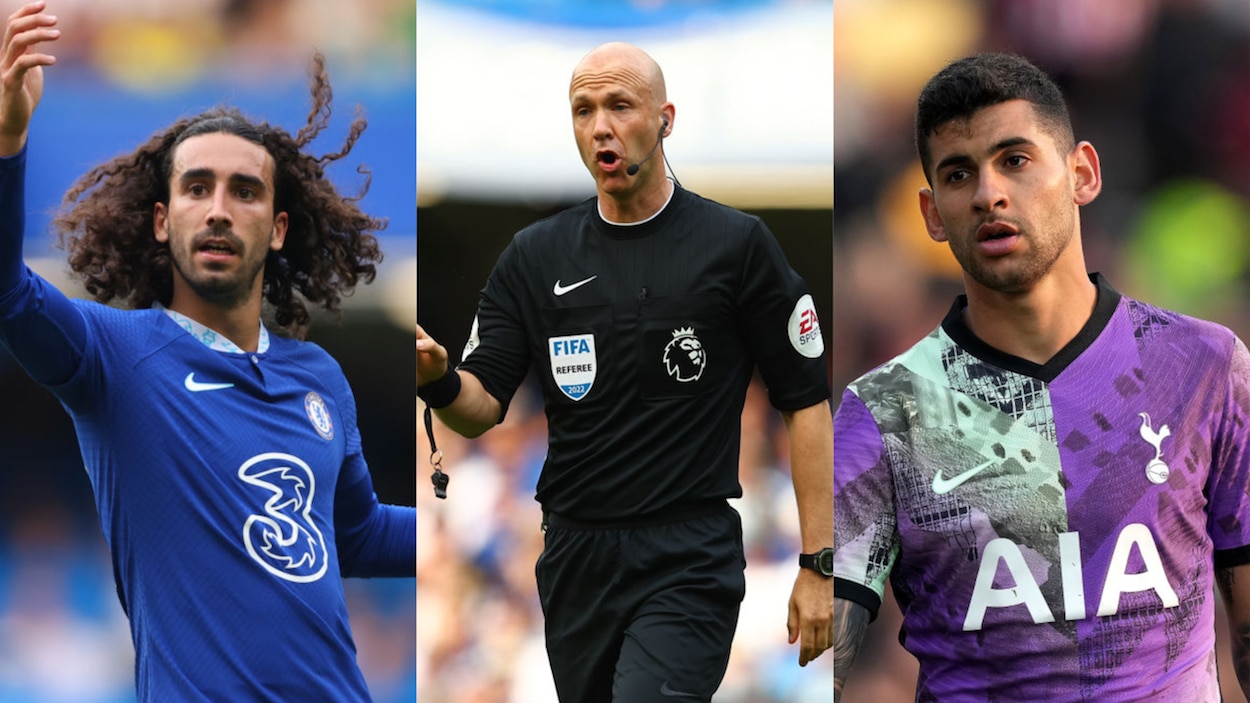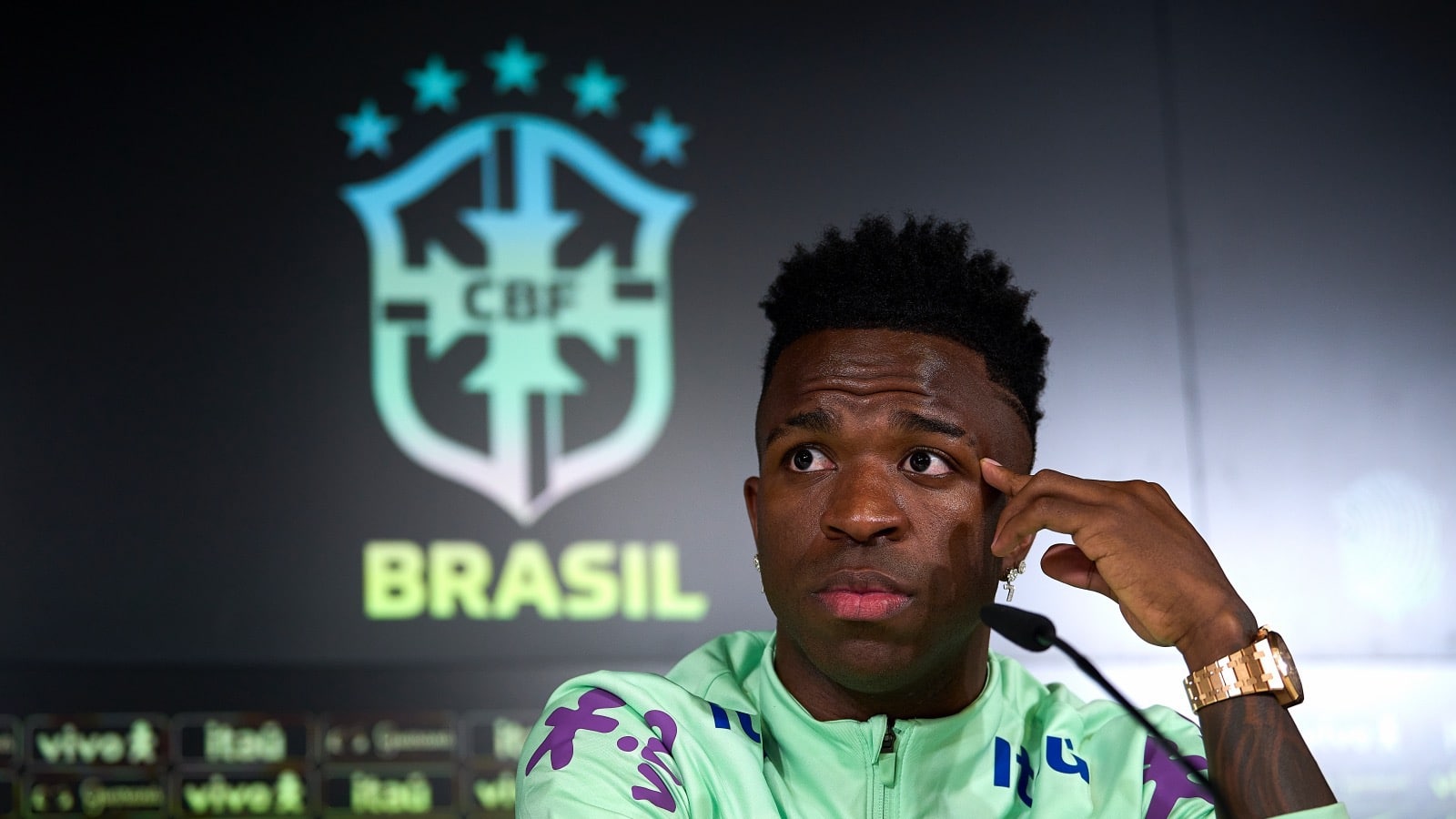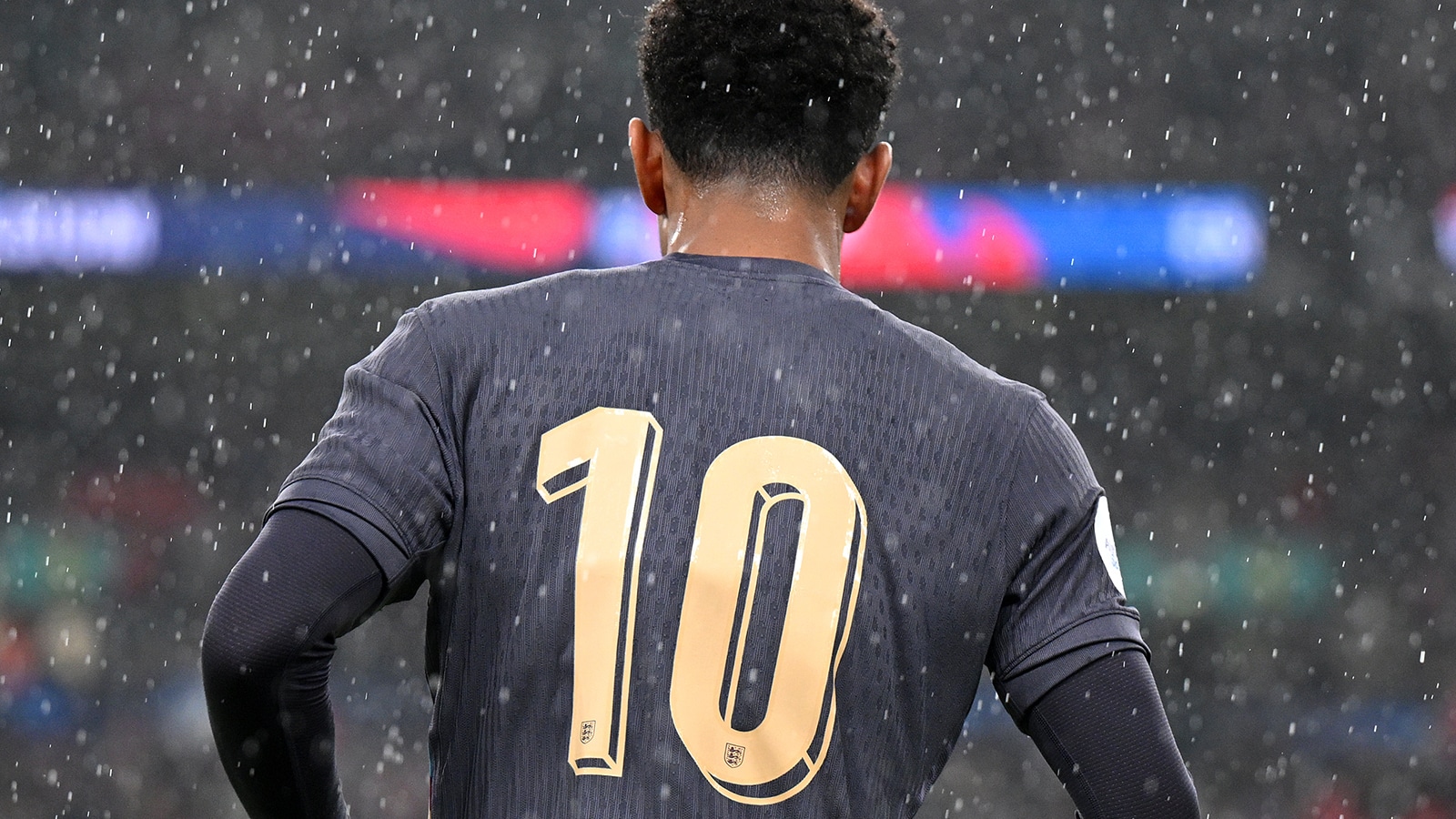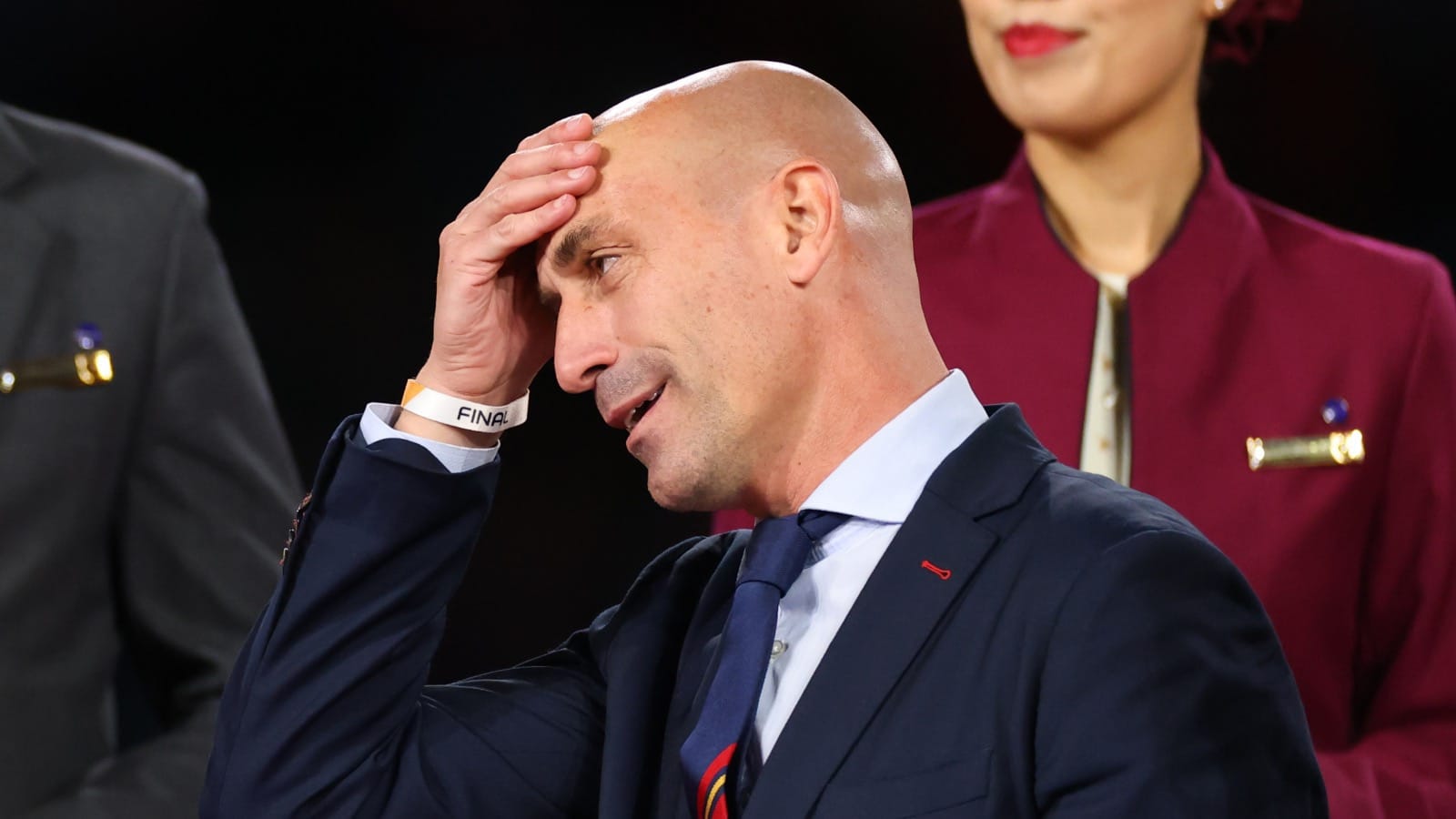
The Marc Cucurella-Christian Romero Hair Pull Perfectly Shows How Premier League VAR Is Built to Fail
Like it or not, Sunday’s Chelsea-Tottenham match produced plenty of drama. And, while you could argue it’s not the ideal way to come away from a top-notch soccer game talking about the officials, referee Anthony Taylor was part of the spectacle. He missed two calls, both of which set the stage for Spurs’ goals, and unsurprisingly drew the ire from Chelsea supporters, Thomas Tuchel, and everyone else on the blue side of the battle. One of those calls — Christian Romero pulling Marc Cucurella’s hair — seemed particularly egregious.
I’m not here to rip the referee, though. Instead, I want to look at VAR and how, in the Premier League, it’s set up to fail. The fallout from Sunday’s hair pulls shows that and suggests that, until things change, the presence of video replays will only make things worse rather than better.
Christian Romero pulled Marc Cucurella’s hair in a bizarre no-call that both Anthony Taylor and the VAR let go
When you hear there’s a VAR review after a corner, it’s easy to assume there was some untoward behavior that could lead to a penalty kick. On Sunday, however, the opposite happened.
In the final minutes of the Chelsea-Tottenham match, VAR brought the action to a temporary halt. Watching on TV, it became clear that Spurs defender Christian Romero had grabbed Marc Cucurella, who was marking him on a corner kick, by the hair and pulled him to the ground. It seemed like a foregone conclusion that Anthony Taylor would trot to the pitch-side monitor, take a token glance, and issue a red card for violent conduct.
Instead, nothing happened. And, to add insult to injury, Tottenham scored off the subsequent corner, leveling the score at 2-2.
The hair pull brutally highlights the shortcomings of Premier League VAR
While most of the post-match fury has been directed at Anthony Taylor, he isn’t my focus. Although he missed something that was happening right in front of his face — I’m more inclined to look at the missed foul leading to the first goal as an incorrect judgment call — the referee was also hung out to try by VAR.
When video review came to soccer, it was billed as a way to help the officials. There’s too much happening on the pitch to expect one person to see everything, the logic went, so VAR will provide a safety net. If you were too far away, couldn’t see clearly, or simply weren’t sure what happened, there was help.
In practice, though, that’s not what happens. In the Premier League, VAR can only intervene on a clear and obvious error. If the incident doesn’t reach that arbitrary threshold, nothing happens.
To be fair, there is a good sentiment behind that idea. No one wants to see the game stopped every 30 seconds for the VAR to overturn a materially insignificant foul in the middle of the pitch. In theory, limiting interventions to “clear and obvious” mistakes ensures that VAR only intervenes when absolutely necessary.
That’s not how it works, though. Since the term clear and obvious isn’t that clear or obvious — saying something is obvious or not is, in of itself, a judgment call — we get plenty of mysterious decisions that seem to defy common sense. It also doesn’t help matters that the pitch-side monitor, which theoretically can provide the referee with a second look at the incident, is really only used as a prop. When the official goes to take a second look, it’s almost guaranteed that he’s been told to change the call. That robs him of the ability to consider the incident on his own, albeit with the benefit of some additional angles. Add a lack of clear communication into the mix, and you’ve got a mess.
Let’s look at the hair pull for a perfect example of how that all combines into a non-functioning system.
During the play, Romero pulls Cucurella’s hair. While we don’t know what Taylor did or did not see, VAR brings a halt to proceedings to check what happened. From there, there are a couple of possibilities. While we can’t know which exactly happened, they all highlight flaws in the process.
- Taylor said he saw the incident and decided that it wasn’t a foul. As long as he’s not materially wrong and made a judgment call, it’s impossible to say he made a clear and obvious error, and VAR can’t intervene.
- VAR said that the incident didn’t rise to the level of violent conduct, meaning there was nothing to change. (VAR can’t intervene on a standard foul, unless it leads directly to a goal). Without a potential change, Taylor can’t go look at the monitor.
No matter which of those took place (it seems like it was closer to the latter), consider that the fans see. They see a pause for review, some rather damning replays, and then a signal to play on with no explanation. That reality sets the stage for angry tweets, petitions, and general vitriol. Just about everyone can accept a missed call in isolation, but when the system designed to fix those mistakes doesn’t do anything, there’s nowhere else for the mind to turn.
Communication and allowing the on-field referee to actually use the monitor could be a way to fix the issue
The biggest thing that the Premier League could do to fix the VAR situation is to share what’s being discussed and why certain calls aren’t changed. In fairness, that dialogue is supposed to be released at some point this season, but it seems like FIFA, which controls all of VAR on a global scale, is the complicating factor there.
Beyond that, I’d also lessen the clear and obvious standard and return some judgment to the on-field referee.
Let’s pretend that the VAR is checking the entire game in the background and notices something significant that they believe the referee missed. Should that happen, they let him know what happened and, regardless of what he did or did not see, recommend he take a second look with the benefit of alternate angles. Then, he can make the call as he sees fit.
While you could argue that standard still creates a judgment situation — what is significant? — it would mitigate some complicating factors. By sending the referee to the monitor to make the call himself, you can lessen the standards for a video review. If VAR isn’t saying “change this,” they can recommend things that aren’t black and white. If the referee looks at an incident again and decides the original call stands, then no harm, no foul.
Allowing the on-field official to make the call could also address the human element of one referee overruling another. While that shouldn’t matter, no one wants to undermine a peer, especially a peer who is in a position of authority. If the referee looks at a replay and revises his own call, he not only increases his on-field power — nothing shows more control of a situation than admitting you made a mistake and fixing it — but becomes more human. As I mentioned above, most fans can accept a missed call; it’s the situations where all parties involved seem to overlook the obvious evidence that becomes frustrating.
Is there a perfect solution? Probably not. Getting upset with officiating is a fundamental part of the sports-watching experience.
With that being said, though, something has to give. As the Marc Cucurella-Christian Romero hair pull shows, the current situation doesn’t help anyone.
Like Sportscasting on Facebook. Follow us on Twitter @sportscasting19 and subscribe to our YouTube channel.



